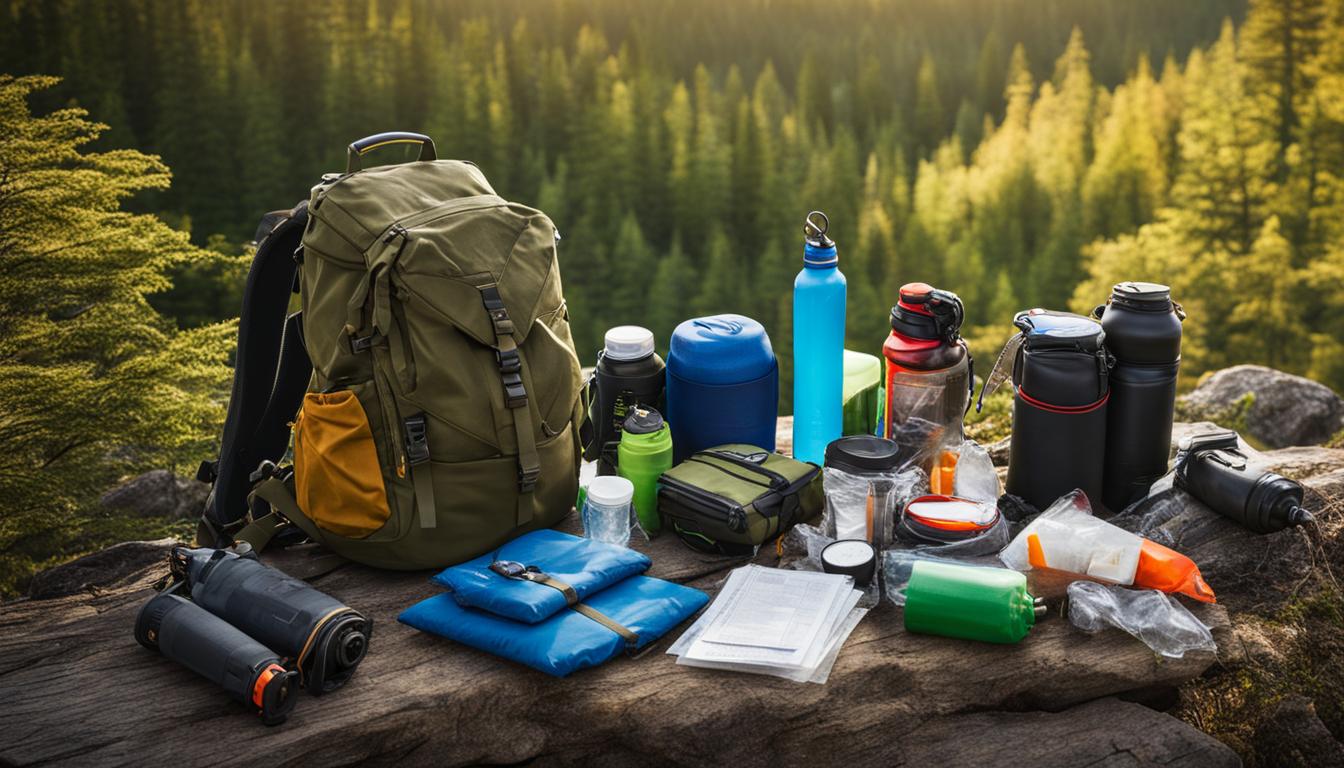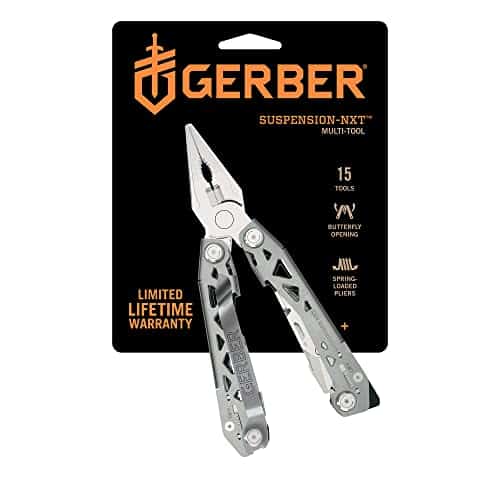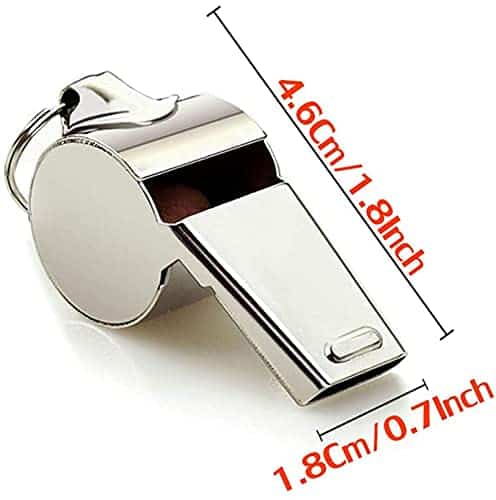Welcome to our in-depth beginner’s guide to grilling. In this article, we will delve into the top 10 crucial tips that will enhance your grilling abilities from beginner to expert. We will discuss mastering your grill and managing heat, selecting top-notch meat cuts, adding unique flavors, and even grilling vegetables and fruits. After reading this guide, you will be equipped with the skills and know-how to amaze your loved ones with mouthwatering grilled dishes.
Key Takeaways:
- Outdoor cooking is a versatile and enjoyable activity that allows you to create delicious meals.
- Grilling requires understanding your grill, heat management, and investing in essential tools.
- Choosing high-quality cuts of meat and experimenting with different flavors will enhance your grilling experience.
- Mastering various cooking techniques and exploring global recipes will broaden your culinary skills.
- Chicken and barbeque styles offer endless possibilities for creative and tasty dishes.
Get to Know Your Grill and Essential Tools
To master the art of outdoor cooking, it’s important to familiarize yourself with your grill and have the right tools. Whether you’re using a gas, charcoal, or electric grill, understanding the different heat cooking methods and investing in essential grilling tools like thermometers, tongs, and a grill brush will help you control the heat and achieve even cooking. Other essential equipment includes a grill cover, chimney starter, and drip pan.
When it comes to outdoor cooking equipment, having a grill thermometer is crucial for controlling the temperature of your grill and ensuring perfectly cooked meals. A meat thermometer is also essential to check the internal temperature of your meat, guaranteeing that it reaches the desired level of doneness. These tools take the guesswork out of grilling and allow you to achieve consistent results every time.
Grill tongs are another must-have tool for any grilling enthusiast. They are versatile and make it easy to flip and move food on the grill without damaging it. A grill brush is essential for keeping your grill grates clean and preventing food from sticking. Regularly cleaning your grill grates not only prolongs the life of your grill but also ensures that your food doesn’t taste like remnants from previous cookouts.
Other grill accessories that can enhance your outdoor cooking experience include a basting brush for applying marinades or sauces, a grill spatula for flipping delicate items like fish fillets, skewers for making delicious kebabs, and a grilling basket to prevent smaller or delicate foods from falling through the grates. Investing in these essential tools will make your grilling sessions more enjoyable and help you create impressive meals for your family and friends.

Maintaining Your Grill
In addition to having the right tools, it’s essential to properly maintain your grill to ensure its longevity and optimize its performance. One important step is to cover your grill when it’s not in use to protect it from the elements. A grill cover will shield your grill from rain, snow, and UV rays, preventing rust and damage.
Cleaning your grill grates before and after each use is crucial for proper hygiene and optimal cooking results. Use a grill brush to remove any food particles or residue, and make sure to clean both the top and bottom of the grates. Preheating your grill before cooking can also help burn off any remaining debris and ensure even heat distribution.
By taking the time to familiarize yourself with your grill and investing in the right tools, you’ll be well-equipped to master the art of outdoor cooking. With practice and experimentation, you’ll soon be grilling up delectable dishes that will impress your taste buds and those of your loved ones.
Essential Grilling Tools for Beginners
When it comes to outdoor cooking, having the right tools is essential for success. As beginners, investing in a few key grilling tools will not only make your cooking experience easier but also ensure that your grilled dishes turn out delicious every time. Here are some of the must-have grilling tools to get you started:
Grill Thermometer
 A grill thermometer is crucial for monitoring the temperature of your grill. It allows you to achieve perfect doneness and prevent overcooking or undercooking your food. With a thermometer, you can easily determine when your steaks are medium-rare or when your chicken is fully cooked, ensuring juicy and flavorful results.
A grill thermometer is crucial for monitoring the temperature of your grill. It allows you to achieve perfect doneness and prevent overcooking or undercooking your food. With a thermometer, you can easily determine when your steaks are medium-rare or when your chicken is fully cooked, ensuring juicy and flavorful results.
Meat Thermometer
A meat thermometer is a handy tool to have when grilling. It helps you accurately measure the internal temperature of your meat, ensuring that it is cooked to the desired level of doneness. Whether you’re grilling steaks, chicken breasts, or burgers, a meat thermometer takes the guesswork out of cooking times and ensures that your meat is safe to eat.
Grill Tongs
To flip and move food on the grill, a pair of long-handled grill tongs is essential. Look for tongs with a good grip that allow you to easily handle even the smallest pieces of food. Whether you’re turning burgers or arranging veggies on the grill, a sturdy pair of tongs will become your go-to tool.
Grill Brush
After grilling, it’s important to keep your grill grates clean. A grill brush with sturdy bristles helps you remove any food residue or grease from the grates, ensuring that your grill is ready for your next cookout. Regular cleaning not only extends the lifespan of your grill but also prevents any unwanted flavors from transferring to your food.
Basting Brush
A basting brush is ideal for applying marinades, sauces, or glazes to your food while grilling. Look for a brush with heat-resistant bristles and a long handle for easy application. Whether you’re brushing BBQ sauce on ribs or adding a garlic butter glaze to your grilled shrimp, a basting brush allows you to infuse your dishes with flavor.
Grill Spatula
When it comes to flipping delicate items like fish fillets or burgers, a grill spatula is a must-have tool. Look for a spatula with a wide, thin, and flexible blade that allows you to easily slide it under the food without damaging it. A quality grill spatula will help you achieve perfectly grilled, intact pieces of food.
Skewers
Skewers are essential for grilling kebabs, vegetables, or even fruits. Invest in skewers made from stainless steel or bamboo, ensuring they are long enough to hold your desired amount of food. Whether you’re grilling meat and vegetable skewers or making colorful fruit kebabs, skewers make grilling and serving a breeze.
Grilling Basket
A grilling basket is a convenient tool for grilling small or delicate items that might otherwise fall through the grill grates. It allows you to easily flip and cook items like shrimp, sliced vegetables, or even delicate fish fillets. Look for a grilling basket with a non-stick coating and a sturdy handle for easy maneuverability.
Choosing the Right Type of Grill
When it comes to outdoor cooking, choosing the right type of grill is essential. Each type – gas, charcoal, and electric – has its own unique characteristics and advantages. Understanding these differences will help you make an informed decision and ensure that your grilling experience is enjoyable.
Gas Grill
Gas grills are popular for their convenience and ease of use. They offer precise temperature control, allowing you to adjust the heat with the turn of a knob. Gas grills also heat up quickly, saving you valuable time when you’re eager to start cooking. They are a great option for those who value convenience and want to get grilling without much hassle.
Charcoal Grill
Charcoal grills are known for the unmistakable smoky flavor they impart on food. They provide a traditional grilling experience and are favored by grilling enthusiasts for their authenticity. Charcoal grills require more time and effort to light and maintain the charcoal, but many believe that the flavor payoff is worth it. If you enjoy the process of charcoal grilling and the unique taste it produces, this type of grill may be the perfect choice for you.
Electric Grill
Electric grills are a convenient option for those who don’t have access to outdoor space or prefer a smoke-free grilling experience. They are easy to use, simply requiring an electrical outlet for power. Electric grills heat up quickly and evenly, providing consistent cooking results. While they may not provide the same smoky flavor as gas or charcoal grills, electric grills are a convenient and reliable option for outdoor cooking.
| Type of Grill | Advantages |
|---|---|
| Gas Grill | Convenient and easy to use, precise temperature control, quick heating |
| Charcoal Grill | Authentic smoky flavor, traditional grilling experience |
| Electric Grill | Convenient, smoke-free option, quick and even heating |
So whether you value convenience, smoky flavor, or a compact size, there is a grill type that suits your needs. Consider your preferences and the features of each grill type to make the right choice for your outdoor cooking adventures. Happy grilling!

Preparing Your Grill for Cooking
Properly preparing your grill is essential for optimal cooking results and safety. Follow these steps to ensure your grill is clean and ready to use:
Cleaning Grill Grates
Start by cleaning the grill grates. Use a grill brush to remove any leftover food particles or debris from previous use. Scrub the grates thoroughly to ensure they are clean and ready for cooking. This step will prevent any unwanted flavors or residue from transferring to your food.
Preheating the Grill
Before cooking, preheat your grill to the desired temperature. This step is crucial for even cooking and desirable grill marks. For gas grills, turn on the burners and close the lid. Allow the grill to heat up for at least 10-15 minutes. For charcoal grills, light the charcoal and let it burn until the coals are covered with ash. Spread the coals evenly across the bottom of the grill and replace the grate. Close the lid and let the grill heat up for about 10 minutes.
By properly cleaning your grill grates and preheating the grill, you’ll ensure that your food cooks evenly and has that delicious grilled flavor. Now you’re ready to start cooking!

| Step | Description |
|---|---|
| 1 | Clean the grill grates using a grill brush to remove any leftover food particles or debris. |
| 2 | Preheat the grill to the desired temperature for at least 10-15 minutes. |
Choosing Quality Cuts of Meat
When it comes to grilling, choosing high-quality cuts of meat is crucial for achieving delicious results. The right meat selection can make a significant difference in the flavor, tenderness, and juiciness of your grilled dishes. Here, we’ll explore some of the best beef cuts for grilling and popular steak cuts, as well as poultry cuts that are perfect for your outdoor cooking adventures.
For beef lovers, it’s hard to beat the rich flavor and tenderness of well-marbled steaks. Ribeye and New York strip steaks are excellent choices, as their marbling adds juiciness and enhances the taste. Opt for bone-in cuts whenever possible, as they tend to retain more moisture during the grilling process.
When it comes to poultry, bone-in, skin-on cuts are ideal for grilling. This includes chicken thighs, drumsticks, and wings. The bone and skin help to lock in moisture, resulting in succulent and flavorful grilled chicken. Don’t be afraid to experiment with different marinades and spices to elevate the taste even further.

Table: Recommended Cuts of Meat for Grilling
| Meat Type | Recommended Cuts |
|---|---|
| Beef | Ribeye, New York strip, T-bone, Porterhouse |
| Poultry | Chicken thighs, drumsticks, wings |
| Steak | Tenderloin, filet mignon, flank steak, skirt steak |
Remember, when selecting meat for grilling, look for cuts that are well-marbled and have good fat content. This will ensure tenderness, juiciness, and maximum flavor. Don’t shy away from trying different cuts and experimenting with seasonings and marinades to find your favorite combinations. With high-quality meat, your grilled dishes will be the star of any outdoor gathering.
Exploring Different Cooking Techniques
When it comes to outdoor cooking, mastering different cooking techniques is key to creating flavorful and perfectly cooked dishes. By understanding the various grilling techniques, you’ll be able to elevate your outdoor cooking skills and impress your guests. Let’s dive into some of the essential techniques you should know:
Direct Heat Cooking
Direct heat cooking is a popular technique that involves placing your food directly over the heat source. This method is ideal for foods that cook quickly, such as hamburgers, hot dogs, and grilled vegetables. The direct heat provides a searing effect, creating a delicious crust on the outside while locking in the juices.
Pro tip: Make sure to preheat your grill before cooking to ensure the temperature is hot enough for direct heat cooking.
Indirect Heat Cooking
Indirect heat cooking is perfect for larger cuts of meat, such as whole chickens or roasts. This technique involves positioning the food away from the direct heat source, allowing it to cook slowly and evenly. It’s important to have a grill with multiple burners or different heat zones to achieve indirect heat cooking. This method is ideal for achieving tender, juicy meat with a smoky flavor.
Marinades and Rubs
Marinades and rubs are essential for adding flavor to your grilled dishes. Marinades are liquid-based mixtures that tenderize and infuse the meat with flavor. They often consist of a combination of acids (such as lemon juice or vinegar), oil, herbs, and spices. Rubs, on the other hand, are dry mixtures that are rubbed onto the meat before grilling. They create a flavorful crust and enhance the taste of the meat. Experiment with different marinades and rubs to find your favorite combinations.
Pro tip: Allow your meat to marinate for at least 30 minutes to overnight for maximum flavor.

In summary, mastering different cooking techniques like direct heat cooking, indirect heat cooking, and using marinades and rubs will take your outdoor cooking to the next level. Experiment with these techniques and flavors to create mouthwatering dishes that will have everyone coming back for seconds.
Grilling Seafood and Vegetables
Grilling is not just limited to meats; seafood and vegetables can also be transformed into delicious dishes on the grill. Whether you’re a seafood lover or a vegetarian looking for tasty grilled options, we’ve got you covered. Let’s dive into the world of grilling seafood and vegetables and discover some exciting flavors.
When it comes to grilling seafood, it’s important to choose the right type of fish or shellfish. Firmer fish such as salmon, tuna, and halibut are perfect for grilling as they hold their shape well. You can marinate the seafood with flavors like lemon and herbs or experiment with spicy marinades for an extra kick. The smoky aroma that grilling imparts on seafood adds a unique touch to every bite.
Grilling vegetables on the other hand, brings out their natural sweetness and adds a delicious charred flavor. Some popular vegetables that grill exceptionally well include peppers, zucchini, eggplant, and corn. You can brush them with olive oil, sprinkle them with your favorite seasonings, and let them cook over the flames. Grilled vegetables are not only healthy but also vibrant and visually appealing, making them a perfect addition to any grilled salad.

To create a mouthwatering grilled salad, simply combine your favorite grilled vegetables with a bed of fresh salad greens. Top it off with some crumbled feta cheese, toasted nuts, and a tangy vinaigrette dressing. The combination of smoky grilled vegetables and crisp, refreshing greens creates a delightful contrast of flavors and textures.
So the next time you fire up the grill, don’t forget to explore the world of grilling seafood and vegetables. With a variety of flavors and textures to experiment with, you’ll be able to create impressive dishes that will wow your guests and elevate your outdoor cooking skills.
Exploring Global Outdoor Cooking Recipes
Embark on a culinary adventure and travel the world through your grill with these delectable outdoor cooking recipes. From the vibrant flavors of the Mediterranean to the aromatic spices of the Middle East, the sizzling delights of Asian cuisine, and the bold tastes of the Caribbean, you’ll discover an array of mouthwatering dishes to tantalize your taste buds.

Mediterranean Grilling
Indulge in the flavors of the Mediterranean with grilled dishes that showcase the region’s fresh ingredients and aromatic herbs. Try your hand at preparing muhammara, a spicy red pepper and walnut dip, or whip up a creamy tzatziki sauce to accompany your grilled meats. Don’t forget to grill juicy kebabs marinated in zesty lemon, garlic, and olive oil for a taste of the Mediterranean coastline.
Middle Eastern Grilling
Transport yourself to the Middle East with ember-roasted vegetable dishes and succulent kebabs. Discover the smoky flavors of baba ganoush, a grilled eggplant dip, or savor the tender juiciness of lamb kebabs marinated in aromatic spices like cumin and coriander. Middle Eastern grilling is a feast for all the senses.
Asian Grilling
Experience the bold and vibrant flavors of Asian cuisine with grilled dishes that will take your taste buds on a journey. From tender teriyaki chicken skewers to smoky grilled salmon glazed with a sweet and spicy sauce, Asian grilling techniques offer a harmonious balance of flavors. Don’t forget to explore Korean barbecue with sizzling beef bulgogi and an array of tasty side dishes.
Caribbean Grilling
Infuse your outdoor cooking with the vibrant and tropical flavors of the Caribbean. Dive into the world of jerk chicken, marinated in a fiery blend of scotch bonnet peppers, allspice, and thyme, and grilled to perfection. For seafood lovers, try barbeque halibut with a tangy mango salsa for a taste of island living.
With these global outdoor cooking recipes, you can bring the flavors of the world to your backyard and impress your family and friends with an international feast. So fire up the grill, get your ingredients ready, and let your taste buds embark on a culinary journey like no other.
Embracing the Versatility of Chicken
When it comes to outdoor cooking, chicken is a versatile meat that offers a world of possibilities. From classic barbeque chicken to marinated quail and smoke-roasted turkey, there are endless ways to create delicious grilled chicken dishes that will impress your guests. Let’s explore the versatility of chicken and discover some mouthwatering recipes.
One popular option for grilling chicken is to marinate it in flavorful sauces. Whether you prefer a tangy barbecue sauce, a savory teriyaki marinade, or a spicy jerk seasoning, marinating chicken adds depth and richness to the flavor. Allow the chicken to marinate for at least 30 minutes or overnight for maximum flavor infusion.
If you’re looking to venture beyond traditional chicken cuts, consider grilling marinated quail for a unique and elegant dish. Quail is a small game bird that boasts tender, succulent meat. Marinate the quail in a mixture of herbs, spices, and olive oil to enhance its natural flavors. Grill over medium heat until the meat is cooked through and the skin is crispy.
For those who want to challenge themselves and try something different, smoke-roasted turkey is a delightful option. Smoking the turkey infuses it with a smoky aroma and juicy tenderness. Start by brining the turkey to ensure it stays moist during the cooking process. Then, smoke it over low heat for several hours until it reaches an internal temperature of 165°F (74°C).

Grilled Chicken Recipes
Here are some delicious grilled chicken recipes that will take your outdoor cooking skills to the next level:
- Classic Barbeque Chicken: Coat the chicken with your favorite barbeque sauce and grill over medium heat until cooked through.
- Lemon Herb Grilled Chicken: Marinate the chicken in a mixture of lemon juice, herbs, and olive oil for a fresh and vibrant flavor.
- Tandoori Chicken Skewers: Marinate the chicken in a spicy yogurt-based marinade and thread onto skewers for a taste of Indian cuisine.
- Honey Mustard Glazed Chicken: Brush the chicken with a mixture of honey and mustard for a sweet and tangy glaze.
With these recipes and techniques, you can elevate your outdoor cooking game and enjoy delicious grilled chicken dishes that will impress your friends and family. So fire up the grill and get ready to embrace the versatility of chicken!
Exploring Regional Barbeque Styles
Welcome to the delicious world of regional barbeque styles! Barbeque is a cherished American tradition, and each region has its own unique flavors and techniques that make it special. Whether you’re a fan of tangy Carolina barbeque, bold and smoky Texas barbeque, or the sweet and savory delights of St. Louis barbeque, there’s plenty to explore and savor. Let’s dive into the distinct characteristics of each style and discover the secrets behind their mouthwatering creations.
Carolina Barbeque:
Carolina barbeque is known for its tangy and vinegar-based sauces that pack a punch of flavor. Traditionally, pork is the star of the show, with succulent pulled pork being the most popular choice. The meat is slow-cooked and then drenched in a vinegar and mustard-based sauce that creates a mouthwatering combination of tanginess and smoky goodness. Carolina barbeque also encompasses regional variations, with North Carolina favoring a vinegar and pepper-based sauce, while South Carolina leans towards a mustard-based sauce. Regardless of the specific style, Carolina barbeque is a must-try for any barbeque enthusiast.
Texas Barbeque:
When it comes to big flavors and smoky goodness, Texas barbeque takes the crown. Brisket is the star attraction in Texas, and it’s all about low and slow cooking to achieve that melt-in-your-mouth tenderness. The preferred wood for smoking is mesquite, which imparts a distinctive smokiness to the meat. Texas barbeque is all about letting the meat shine, with minimal seasoning and a focus on the perfect smoke ring and a flavorful bark. Whether you prefer your brisket sliced or chopped, Texas barbeque is an experience that will leave you craving for more.
Barbeque Sauces:
No barbeque experience is complete without a delicious array of sauces to enhance the flavors. While each region has its own signature sauce, exploring different barbeque sauces is a delightful adventure. From the tangy vinegar-based sauces of Carolina to the tomato-based and sweet molasses sauces of Kansas City, there’s a sauce for every palate. Don’t be afraid to mix and match, or even create your own unique sauce. The world of barbeque sauces is vast and delicious, so get saucy and enjoy!
| Regional Barbeque Styles | Main Meats | Sauce Characteristics |
|---|---|---|
| Carolina | Pork, particularly pulled pork | Tangy and vinegar-based, with variations of mustard and pepper |
| Texas | Brisket | Minimal seasoning, smoky flavor, and emphasis on smoke ring and bark |
As you embark on your grilling adventures, take the time to explore the regional barbeque styles that have captured the hearts and taste buds of Americans. Whether you’re a fan of the tangy and vinegar-based Carolina barbeque or the smoky and flavorful Texas barbeque, each style offers a unique culinary experience. Don’t forget to try different barbeque sauces to elevate your creations and experiment with creating your own mouthwatering concoctions. Happy grilling and savor the deliciousness!

Conclusion
As we wrap up our comprehensive outdoor cooking guide, we hope you’ve found valuable tips, techniques, and inspiration to elevate your grilling skills. Whether you’re a beginner or a seasoned griller, our guide has equipped you with the knowledge and confidence to master the art of outdoor cooking.
By understanding your grill and investing in essential tools, you can take control of the cooking process and achieve consistent results. Preparing your grill properly and selecting high-quality cuts of meat are crucial for creating delicious meals that will wow your family and friends.
We’ve also explored different cooking techniques, from direct and indirect heat to flavorful marinades and rubs, allowing you to experiment and create a wide variety of mouthwatering dishes. Additionally, our guide has introduced you to grilling seafood and vegetables, as well as global outdoor cooking recipes and regional barbeque styles.
Now, armed with these grilling tips and techniques, we invite you to step outside, fire up your grill, and embark on your outdoor cooking adventures. Whether it’s a casual backyard gathering or a special occasion, you can confidently master outdoor cooking and create unforgettable meals that will delight your taste buds.
How can outdoor cooking be incorporated into an off-grid and sustainable lifestyle?
When aiming to embrace sustainable offgrid living, outdoor cooking can be a great way to reduce energy consumption. Utilizing a wood-burning stove or solar oven can help minimize reliance on non-renewable resources. Additionally, harvesting locally grown produce and cooking outdoors can reduce carbon emissions and create a more sustainable lifestyle.
FAQ
What are the essential grilling tools for beginners?
Essential grilling tools for beginners include a grill thermometer, meat thermometer, grill tongs, grill brush, basting brush, grill spatula, skewers, and a grilling basket.
What are the different types of grills?
The main types of grills are gas, charcoal, and electric. Gas grills are easy to use and maintain, charcoal grills offer a smoky flavor, and electric grills are convenient for those without outdoor space.
How can I properly prepare my grill?
Properly preparing your grill involves cleaning the grates before and after each use and preheating the grill to ensure even cooking and desirable grill marks.
How do I choose high-quality cuts of meat for grilling?
Look for well-marbled steaks like ribeye and New York strip for juiciness and flavor. Opt for bone-in, skin-on poultry cuts for added moisture.
What are some essential grilling techniques?
Essential grilling techniques include learning the difference between direct and indirect heat cooking methods, experimenting with flavorful marinades and rubs, and understanding how to grill seafood and vegetables.
How can I grill seafood and vegetables?
To grill seafood, learn how to grill salmon, tuna, halibut, and more, and experiment with marinades and vinaigrettes to enhance the flavors. For vegetables, use a grilling basket to prevent them from falling through the grates.
Can you suggest some global outdoor cooking recipes?
Yes! You can explore Mediterranean flavors with dishes like muhammara and tzatziki, try Middle Eastern ember-roasted vegetable dishes and kebabs, savor Asian skewered meat dishes and Korean barbecue, and experience the vibrant flavors of the Caribbean with jerk chicken and barbeque halibut.
What are some versatile ways to cook chicken on the grill?
There are many ways to cook chicken on the grill, such as grilling classic barbeque chicken, experimenting with unique recipes like marinated quail mixed grill, and trying non-traditional dishes like smoke-roasted turkey. You can also explore different chicken marinades to infuse your dishes with flavor.
What are some regional barbeque styles?
Regional barbeque styles include Carolina, Texas, and St. Louis barbeque. Each style has its own unique flavors and techniques. You can also learn how to make your own barbeque with a variety of meats, dry rubs, and sauces.



















